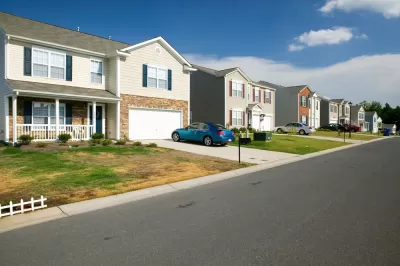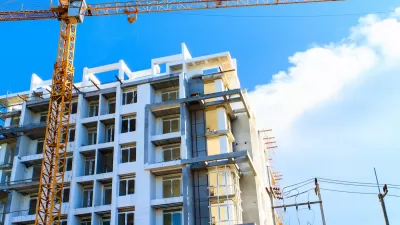Opticos Design, Inc., the Berkeley-based urban planning and architecture firm has launched a new website dedicated to the missing middle of the housing market.

MissingMiddleHousing.com is a new online resource dedicated to helping planners, architects, and builders implement a diverse range of housing types for the walkable communities of the future.
Opticos Design's Daniel Parolek coined the term “Missing Middle” in 2010 to define a range of housing types that provide a solution to the mismatch between the available U.S. housing stock and shifting demographics combined with the growing demand for walkalble urban living.
“MissingMiddleHousing.com will be a valuable resource for architects, planners, developers, elected officials, advocates, and community members—anyone working to build more great places for Americans,” says Lynn Richards, president and CEO of the Congress for the New Urbanism.
The website features clear definitions of the types of mid-density housing that are most effective for creating walkable neighborhoods, and pin-points the market demographic that demands them. There is an extensive photo catalog and documented examples from around the country with illustrations and tables that summarize lot sizes, setback, number of units, and densities. It also includes information on the unifying characteristics of these building types and how to integrate them into existing neighborhoods, explains how to regulate them, and serves as a collective resource for planners and developers seeking to implement these types of projects.
“We felt it was important to create an online resource to help people understand these housing types and what housing planning, zoning, and financing changes are needed to make it possible for these types of homes to be built again,” says Parolek.
Missing Middle housing types within walkable neighborhoods are the ultimate sustainability solution because they give more Americans have access to transportation alternatives, and reduce the strain on our natural resources, and the concept has resonated with the industry in recent years as a key solution to meet the need and demand for walkable communities.
“Well-designed ‘Missing Middle’ buildings unify the walkable streetscape as they greatly diversify the choices available for households of different age, size, and income,” said Ellen Dunham-Jones, professor at the Georgia Institute of Technology and co-author of Retrofitting Suburbia: Urban Design Solutions for Redesigning Suburbs.
The website is online just in time for the American Planning Association and the Congress for the New Urbanism annual conferences April 17–19 and April 29–May 2, respectively.
The APA conference, held this year in Seattle, will include two sessions in which Missing Middle Housing topics will be covered. Parolek will discuss Missing Middle Housing as part of as session on Saturday, April 18, Deep Dive: The Future of Zoning, and Lynn Richards, president of the Congress for New Urbanism will present the concept in her session Leaving Behind 1950s Housing Codes on Sunday April 19.
At CNU23 in Dallas/Fort Worth, Parolek will lead a highly anticipated Missing Middle housing types walking tour, Wednesday, April 29.
FULL STORY: Opticos is Excited to Announce Our New Missing Middle Housing Website!

Alabama: Trump Terminates Settlements for Black Communities Harmed By Raw Sewage
Trump deemed the landmark civil rights agreement “illegal DEI and environmental justice policy.”

Study: Maui’s Plan to Convert Vacation Rentals to Long-Term Housing Could Cause Nearly $1 Billion Economic Loss
The plan would reduce visitor accommodation by 25% resulting in 1,900 jobs lost.

Planetizen Federal Action Tracker
A weekly monitor of how Trump’s orders and actions are impacting planners and planning in America.

Wind Energy on the Rise Despite Federal Policy Reversal
The Trump administration is revoking federal support for renewable energy, but demand for new projects continues unabated.

Passengers Flock to Caltrain After Electrification
The new electric trains are running faster and more reliably, leading to strong ridership growth on the Bay Area rail system.

Texas Churches Rally Behind ‘Yes in God’s Back Yard’ Legislation
Religious leaders want the state to reduce zoning regulations to streamline leasing church-owned land to housing developers.
Urban Design for Planners 1: Software Tools
This six-course series explores essential urban design concepts using open source software and equips planners with the tools they need to participate fully in the urban design process.
Planning for Universal Design
Learn the tools for implementing Universal Design in planning regulations.
Caltrans
Smith Gee Studio
Institute for Housing and Urban Development Studies (IHS)
City of Grandview
Harvard GSD Executive Education
Toledo-Lucas County Plan Commissions
Salt Lake City
NYU Wagner Graduate School of Public Service





























